Planting daffodils outdoors in the fall: when and how to plant bulbs correctly
Perhaps you do not need to explain that autumn is by no means only a time of despondency and wilting of nature, it is also a period of creation (a reserve for the future). So, in the fall it's time to do some winter plantings (especially bulbous plants and flowers), which is what you actually want to do, right?
Well, then you will learn about when it is better to plant daffodils in the fall and how to do it correctly, so that next year, in early spring, these wonderful bulbous plants will delight you with their flowering.
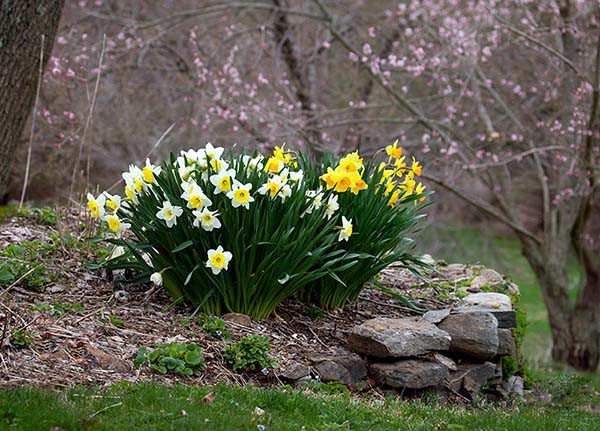
Content
When to plant daffodils outdoors in autumn: timing
The specific dates for planting daffodil bulbs in the fall are determined by the weather and climatic conditions of your region of residence.
It is advisable to plant flowers 2-4 weeks before the onset of the first frostso that during this time they have time to take root in a new place.
Accordingly, for example, in the middle lane (Moscow region) it is optimal to plant daffodils in the fall in open ground in the second half of September-early October.
By the way! Generally, daffodils can be planted in springhowever, you cannot count on blooming this year (only next year).
It's another matter if you presented with bulbs or flowers kicked out in a pot: to save, you just need to plant them in the spring.
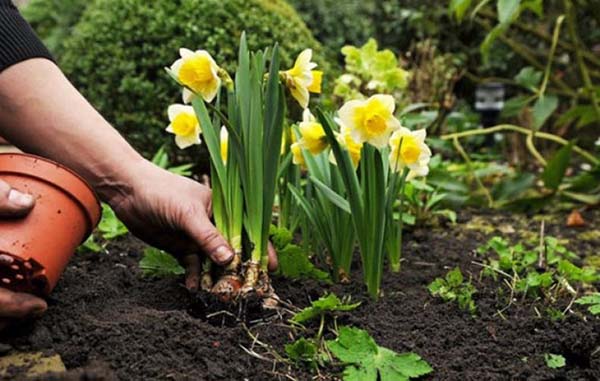
How to choose quality daffodil bulbs
In order not to have any problems, you must initially purchase high-quality planting material, in other words, it is important to carefully examine the daffodil bulbs before buying.
At the same time, it is advisable to buy bulbs in late summer and early autumn in order to plant them immediately, and not deal with their storage.
Signs of a quality daffodil bulb are:
- the presence of dry scales that have a brown or golden hue;
- dry and even bottom;
- absence of any mechanical damage, signs of disease (various spots and molds);
- good density to the touch;
The bulb should not be soft and lethargic.
- normal size (from 4 cm high).
The larger the bulb, the larger the flower can be expected. Accordingly, small bulbs = small flowers.
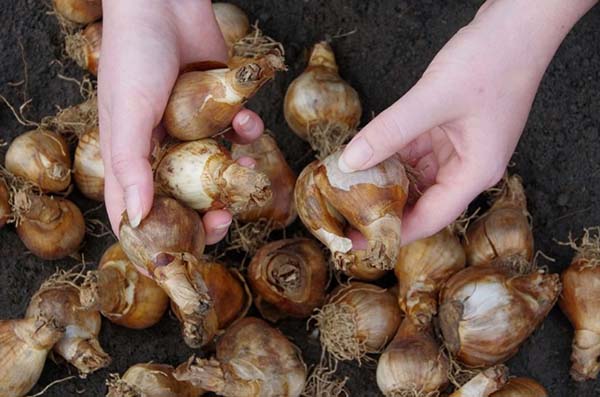
Note! Of course, you should not buy bulbs from which a sprout has hatched. These bulbs are only suitable for spring planting.
How to plant daffodils outdoors in the fall: planting rules
Daffodils will bloom richly and fragrant if you think carefully about the choice of a place, the preparation of the beds and the bulbs themselves for planting.
Choosing a place on the site
It is advisable to choose a place for growing daffodils that is well lit (sunny and open), while it is necessary that it be protected from northern winds.
Although in light partial shade, they will grow and bloom well every year.
Even when choosing a site for planting, it is important to remember that lowland areas are not suitable, since due to high humidity, the bulbs can easily rot. The same applies to places where moisture stagnates in spring after the snow melts.
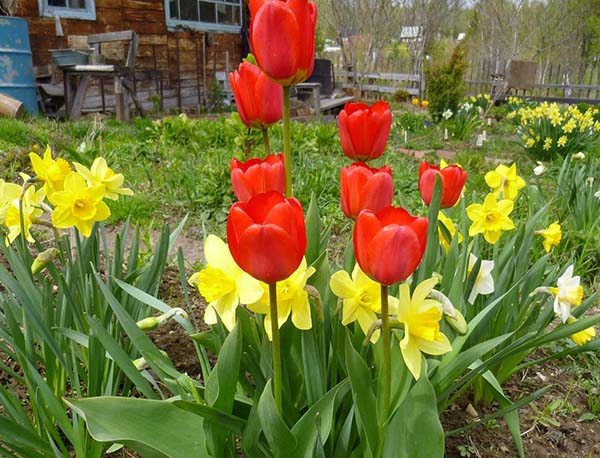
Beautifully plant daffodils in a flower bed next to tulips, hyacinths and crocuses... Also an interesting neighborhood will be with peonies.
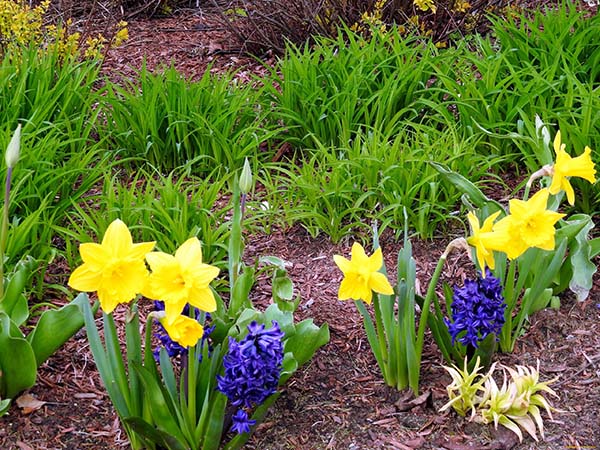
Some summer residents like to plant early flowering bulbs under trees.
Daffodils will fade even before the same apple or pear trees are covered with dense foliage, so that the shadow of the tree crown is not scary for them.
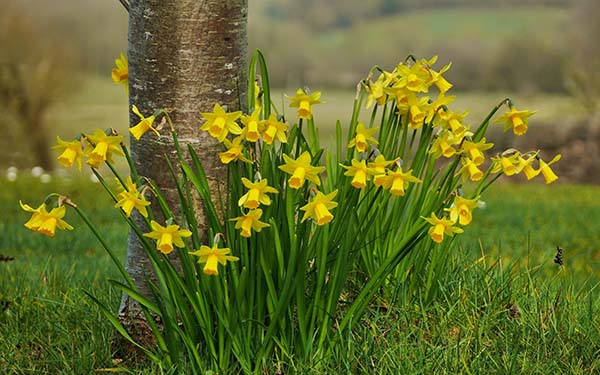
Soil preparation
Daffodils prefer loose and fertile soil, while it should be moisture-absorbing and well-drained. Ideally, if it is loam.
It is advisable to prepare the soil for the autumn planting of any crops in advance (at least 1-2 weeks before planting, optimally a month).
- If you have excessively sandy soil, then peat, humus or compost should be added for digging.
- Heavy clay soil should be made looser with sand or any other baking powder.
Daffodils grow well on neutral soils... If your soil is too acidic, then you can deacidify by making for digging dolomite flour, lime or wood ash.
It will not be superfluous to make phosphorus-potassium fertilizers (mineral - potassium sulfate and superphosphate, organic - wood ash, bone meal), however, you can use a complex mineral fertilizer (for example, diammofosk).
All bulbous need drainageunless, of course, you are planting in sandy soil. In other words, it is recommended to pour a small layer of sand (2-3 cm) on the bottom of the planting hole.
Note! If moisture is stagnatethen the bulbs will get wet and rot.
Pre-planting of bulbs
To avoid possible diseases, before planting daffodil bulbs should be treated in one of the solutions of fungicidal agents (soak for 20-30 minutes).For example, such preparations as Maxim Dachnik, Vitaros are excellent for dressing bulbs, you can also use Fitosporin (Prepare working solutions only according to the instructions supplied with the products).
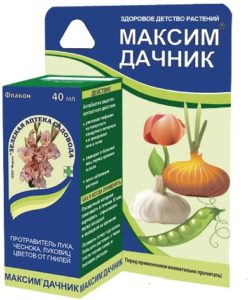
Of course, if you are used to potassium permanganate, then you can use it, but this is a very, very weak etchant. Where better is a 1% solution of copper sulfate.
Planting depth
As for the rules for planting daffodils, almost all novice growers are mainly interested in how deep to plant daffodil bulbs.
The classic rule for planting all bulbous plants is the planting depth should be 3 bulb heights... For example, if the height of the bulb is 4 cm, then the depth of the planting hole is 12 cm (+ 2-3 cm for a layer of sand).
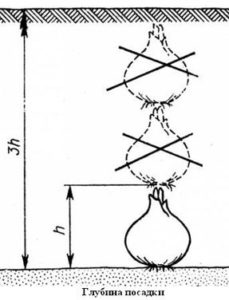
Thus, the planting depth of daffodil bulbs depends on their size (height). You should also take into account the structure of the soil (its mechanical composition). If the soil easythen depth can increase by a couple of centimeters, if heavythen plant closer to the surface of the earth (for example, with a bulb height of 4 cm, plant it at a depth of 9-10 cm).
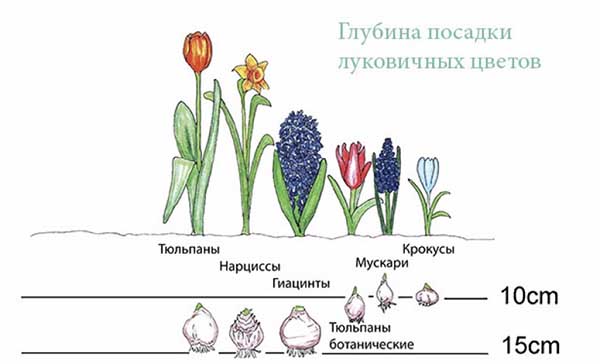
Direct landing
Step-by-step instructions for planting daffodils in open ground:
- Decide on a planting spot in your garden.
- Prepare the soil, apply the necessary fertilizers.
- Etch the bulbs to disinfect the planting material (protect against possible diseases).
- Make planting holes.
We remind you! The planting depth of daffodils (like any other bulbous) is 3 bulb heights. If the height of the bulb is 4 cm, then the depth of the hole is 12 cm (+ 2-3 cm for a layer of sand).
- The distance between the bulbs should be about 15-25 cm.
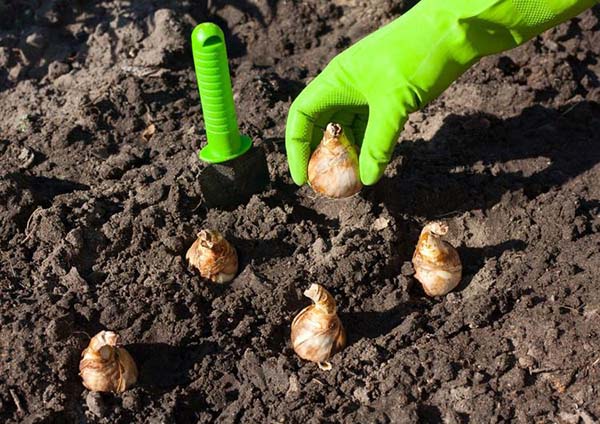
- If your soil is not loose enough (moisture can stagnate), then pour a small drainage layer of sand (1-2 cm) on the bottom.
- Place the bulbs in the holes (sprouts up), and then lightly press into the sand and cover with fertile soil.
- Water.
- Mulch the planting. Suitable as mulch sawdust, peat or the same humus, compost. You can also use cones, thus you will well highlight the planting site.
Video: autumn planting of daffodils step by step
Outdoor daffodil care: growing rules
If you take proper care of daffodils, then these wonderful blooms will grow well and delight you with abundant flowering for many years without digging and transplanting. To do this, you only need to follow the standard recommendations for caring for flowering plants: water, feed, if necessary, weed from weeds and loosen the soil, if it is not mulched.
Narcissists are very fond of moderate watering, especially in early spring, during the beginning of growth and formation of green mass (if there is no rain), also budding and flowering, and even after its end (it is at this time that the bulb is stocked with food).
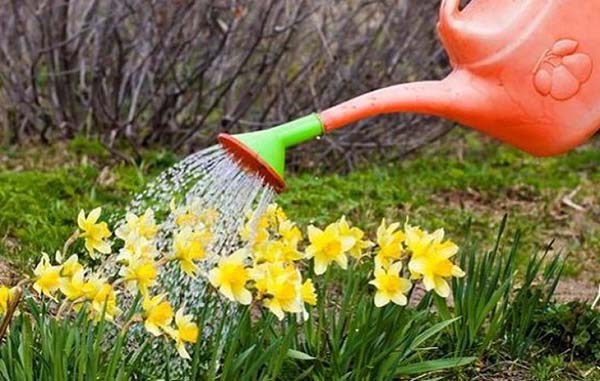
For better flowering, daffodils should be followed several times per season. feed:
- In early spring, when the first greens appear - nitrogen fertilizer (urea, ammonium nitrate, green fertilizer, nettle infusion).
- During the budding period - more potassium (potassium sulfate, potassium magnesium, wood ash).
In general, before flowering, it will be enough to feed just a complex one, such as nitroammophoska or any other fertilizer marked "Spring".
- After flowering, it is recommended to perform cleanly phosphorus feeding... Ideally - superphosphate.
Interesting! Daffodils are so unpretentious that they can bloom beautifully without any additional fertilizing for 4-6 years (especially if you originally planted them in nutritious soil).
So that the plant does not pointlessly waste its energy on seed reproduction, it should remove its fading buds in time (future boxes with seeds), and you need to cut off not only the flowers themselves, but the entire peduncles.
And then you can beautifully weave braids from the remaining leaves.
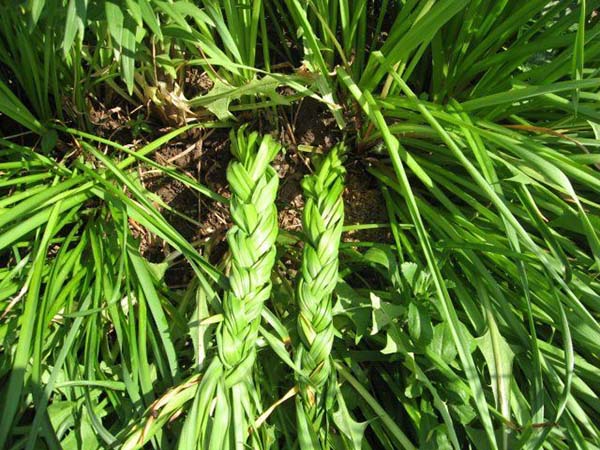
The leaves themselves cannot be cut off; through them, the bulbs accumulate nutrients.
Another thing is that they can be removed after they are completely dry.
As with all bulbous, the main breeding method daffodils - through the bulbs-kids, which are also planted in the fall.
Daffodils - very winter-hardy flowers, therefore, as a rule, they do not need any preparation for the winter.
When to dig up and how to store bulbs
The daffodil bulbs should be dug out at least once every 4-6 years.
For example, tulips are recommended to be dug out every year after flowering (to create an artificial rest period) and again plant in autumn, a digging gladioli for the winter (for preservation, because they do not tolerate frost).
So why dig them up? The fact is that, being in one place for more than 6 years, the flowers begin to shrink and become simply ugly.
When to dig up daffodil bulbs?
The main signal for digging is yellowing of the tips of the leaves (the bush becomes lethargic, and the leaves begin to fall on the ground) and their subsequent drying. This usually occurs on average 2 months after flowering (around August). If you are late, the flowers can take root, which will be very easy to damage when excavated.
Advice! In order not to damage the bulbs, dig them out using a special miniature garden fork or a shovel, but very, very carefully.
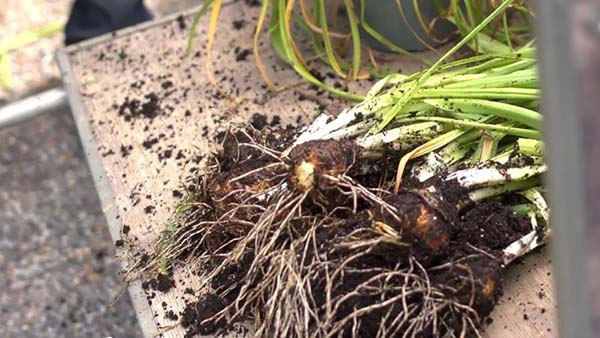
How do I prepare daffodil bulbs for storage?
The dug out bulbs must first be cleaned of soil, inspected for damage (discarded), and then treated in one of the disinfecting solutions, for example, in the same potassium permanganate or in the fungicide "Maxim Dachnik".
Next, you need to dry the bulbs in a shady (not in the sun!) And warm place for 10-14 days.
For storage, put it in a box (you can also put it in a plastic one, the main thing is to have holes) or a cardboard box. The storage area should be cool and well ventilated, such as a cellar (basement) or the bottom shelf of a refrigerator.
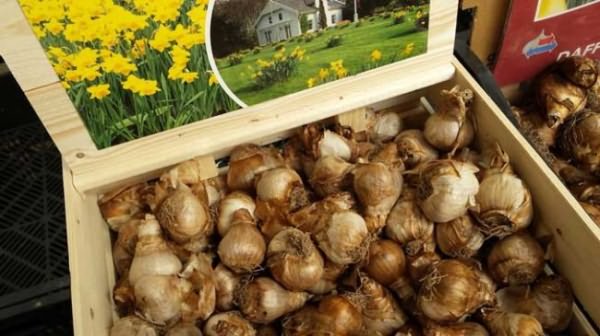
Types and varieties of daffodils
As a rule, the entire variety of species of daffodils is conventionally divided into more than a dozen varietal groups depending on the shape and size of the flower:
- Tubular (Trumpet);
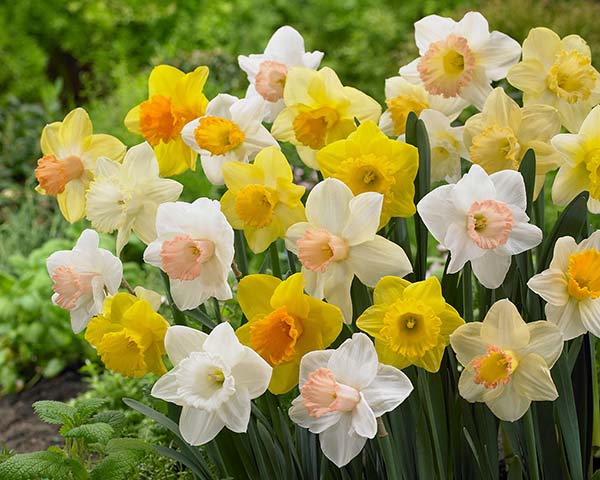
- Large-cupped;
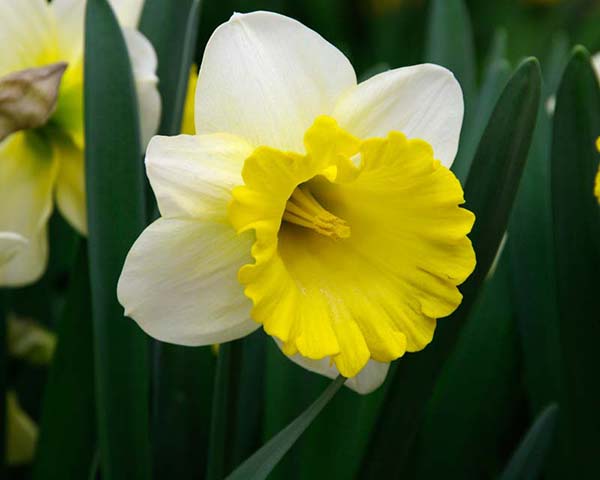
- Small-cupped;
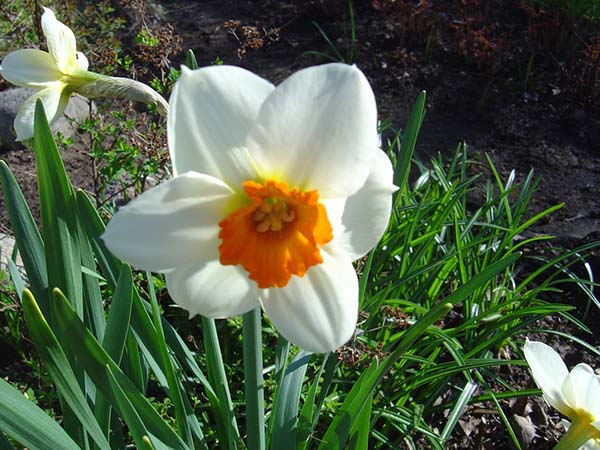
- Split-corona;
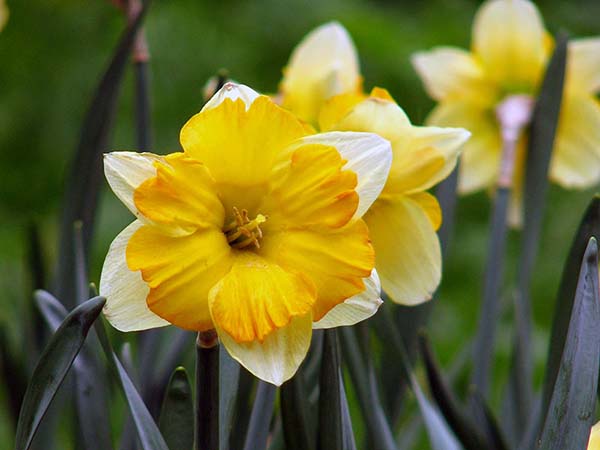
- Terry (Double);
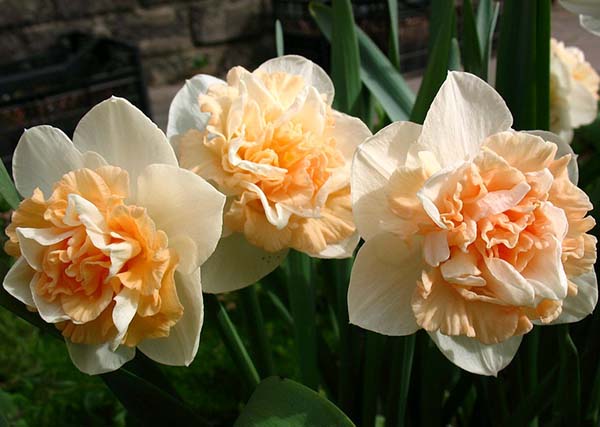
- Triandrus (Triandrus);
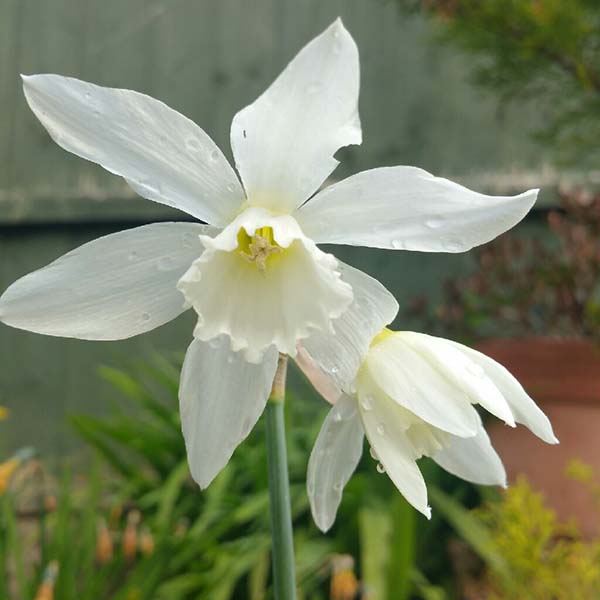
- Cyclamineus (Cyclamineus);
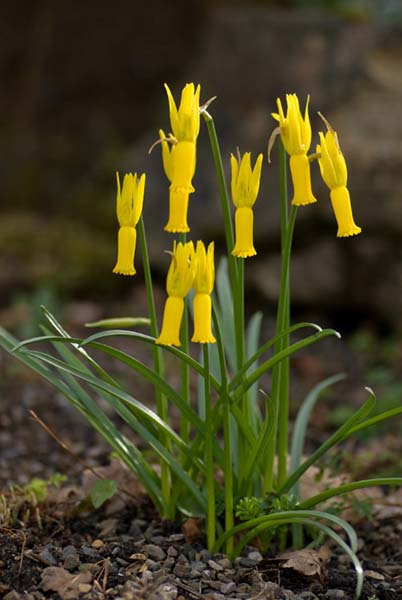
- Jonquilla;
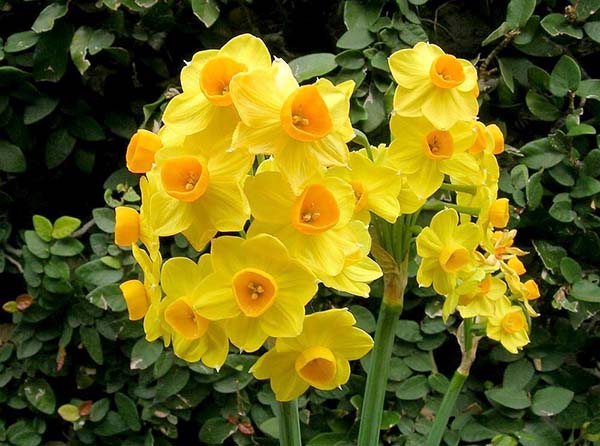
- Tazetta, or multi-flowered (Tazetta, Bunch-flowered);
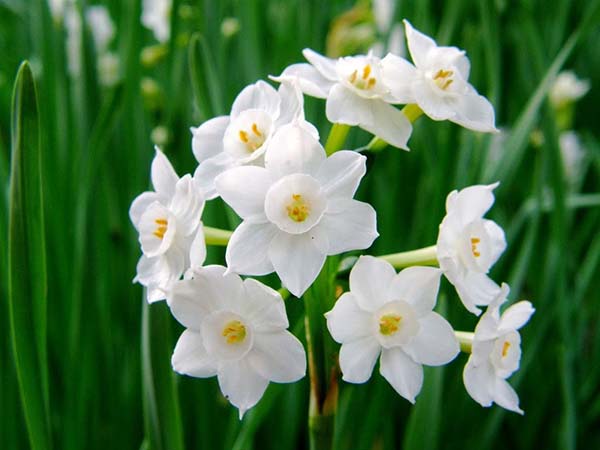
- Poetic (Poeticus);
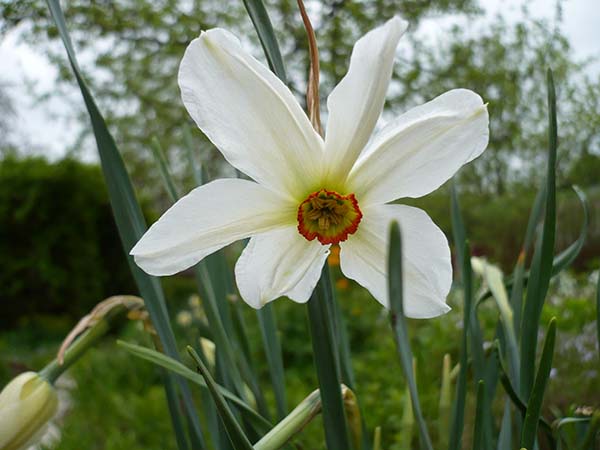
- Wild species: Asturian (small), branched, grooved and enveloped (Bulbocodium Hybrids);
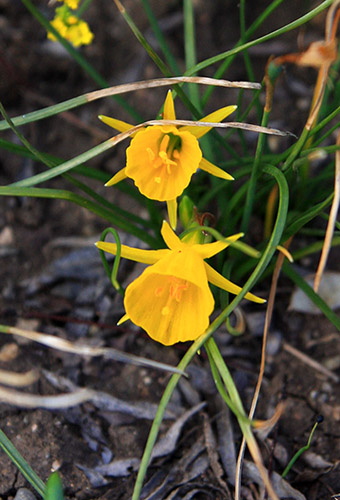
Branus-shaped - Other species not included in the above groups.
By the way! Naturally, each group has its own varieties, differing by color, more precisely shades of color of inflorescences.
Also the varieties differ by flowering time: early bloom already in April (second half), and the latest - at the end of May.
Agree, planting daffodils is as easy as shelling pears, and taking care of them is much easier than tulips or gladioli. Be sure to purchase several different varieties of different flowering times to enjoy their flowering continuously for as long as possible.
Video: planting daffodils in the fall and rules for spring care

